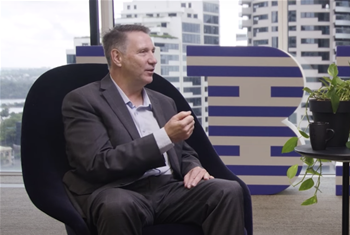The Digital Transformation Agency (DTA) has provided more detail on the rationale for a renewed whole-of-government deal with IBM, saying it is partially about “safe” access to emerging technology and knowledge-sharing, as well as more flexible contracts.
The agency renewed its arrangement with IBM for a further five years in January, but it came in the context of the previous deal being ultimately worth more than double its initial value, in part due to “changes in business requirements" in government over time.
In an interview with IBM Policy Lab, recorded a month ago but only published this week, DTA CEO Chris Fechner emphasised the “partnership” benefits being realised but also accrued through the new deal.
The benefits were outlined at a high level back in January but Fechner’s comments add context to what DTA sought from the renegotiation process.
One of the themes Fechner raises multiple times is “safe” access to technology for experimental purposes, as well as to replicable ideas and concepts that have worked for other governments worldwide and could be brought to bear on Australian government operations.
A notable inclusion in the revised agreement, as announced in January, was access to IBM Quantum, though it’s been unclear in the first six months or so of the agreement how far the federal government has gotten in terms of access or experimentation.
On quantum, Fechner told the IBM Policy Lab that it was considered important to make a whole-of-government deal “not just about the current commercials” but “about the future as well.”
“Having access to IBM’s … developed capabilities in quantum gives government the opportunity to experiment with that use for application in our own areas but it also makes sure that we’re keeping up with the pack in terms of how quantum can be used to make sure that our systems are kept safe, protected from the large number of cyber attacks that are coming through,” Fechner said.
“Also, [it’s about] how the government can look to use quantum to answer wicked problems that otherwise don’t seem to be solved with current technology levels.
“Being able to get access to this stuff early and safely, without actually having to go through a big procurement exercise, has really helped us to think about how we can be quick, how we can experiment, and how we can train our people to understand this next capability.”
The second aspect of “partnership” emphasised by Fechner was effectively access to intelligence on what other governments worldwide are doing, to see what might be replicable here.
Fechner said he was also interested in intelligence from other sectors as well, again where there might be some cross-applicability in a demonstrated use case.
“Government, for a very long time, has been very conscious that it was thinking about how it needed to do everything for itself,” he said.
“Understanding how our partners can bring forward their global experience, their global capabilities, against a whole variety of different problem spaces, but then use that experience to apply them to the context of government, means that we can actually start and do things much more effectively because we’re not trying to research or discover every answer ourselves.
“Technology is rapidly evolving and changing so quickly [that] we have this situation where government does not have the depth or capability to keep up with that change all by itself.
“By having good and trusted relationships with partners, we can understand, without the risk of having to invest in all of those technologies ourselves, which ones are going to give us value in their application to government and which ones aren’t, and we can do that with partners in quite a safe way.”
Clearly, the renewed IBM deal also had more current commercial benefits as well; one of those that was raised in January, without much context, was the idea that the new arrangement “streamlines contracting”.
There is still some ambiguity in the comments, although it appears flexibility to deal with unplanned changes in technology direction or demand for services is one aspect that Fechner has sought to build into whole-of-government agreements as a matter of course.
The government, Fechner said, wanted more supportive contractual arrangements with its technology providers that allowed it to avoid getting bogged down in the minutiae of contract renegotiation.
Fechner said there had been situations where the government had to “scale out elastically, way beyond any of the contractual considerations of those environments”,and that the government had been able to do so by leveraging whole-of-government arrangements and “partner” relationships.
“We were able to really use that to expand out on things that would otherwise have taken months and even years to contractually sort out,” he said.



.jpg&h=140&w=231&c=1&s=0)























